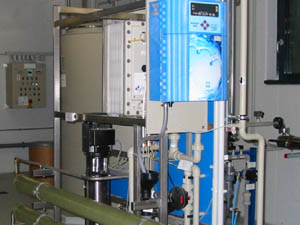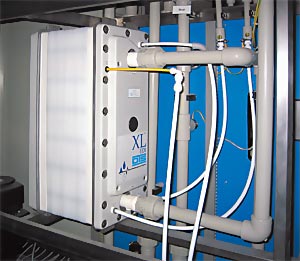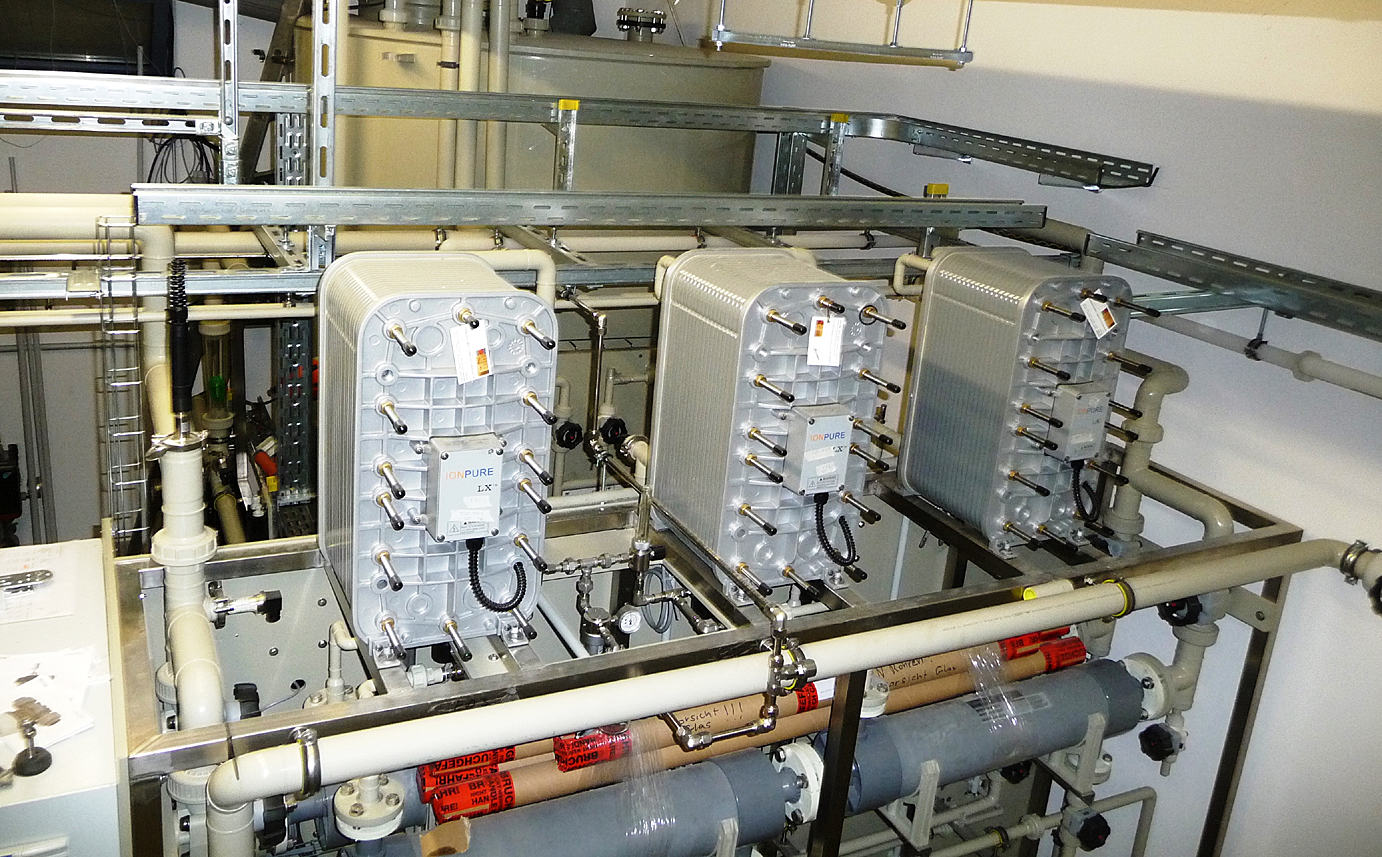Electrodeionisation
 Plant examples
Plant examples
 Plant examples
Plant examples
 Plant examples
Plant examples
Electrodeionisation was developed in the 1980's and 1990's. That ion exchangers in DI processes could not only be regenerated by acids or bases, but also with the help of an electric field was a revolutionary idea. If an electric field is applied, OH- ions and H+ ions are generated and able to regenerate the resin. Via semi-permeable membranes and with the help of the applied potential, the regeneration products can be introduced into the concentrate stream. Demineralisation and resin regeneration take place simultaneously.
EnviroDTS electrodeionisation installations are characterised by their safe layout. They are calibrated with the reverse osmosis installation and the upstream treatment stages in order to meet the customer's requirements. After electrodeionisation, water quality (conductivity) is generally 0.1–0.2 µs/cm. The TOC content is < 30 ppb and the microbial contamination <0.1 /ml.
Usually, groups of modules are installed that can be connected and disconnected individually so that there is always the right amount of water for the different operating modes.



